Biker Superstitions: A Deep Dive into the Rituals and Mentality of Motorcycle Riders
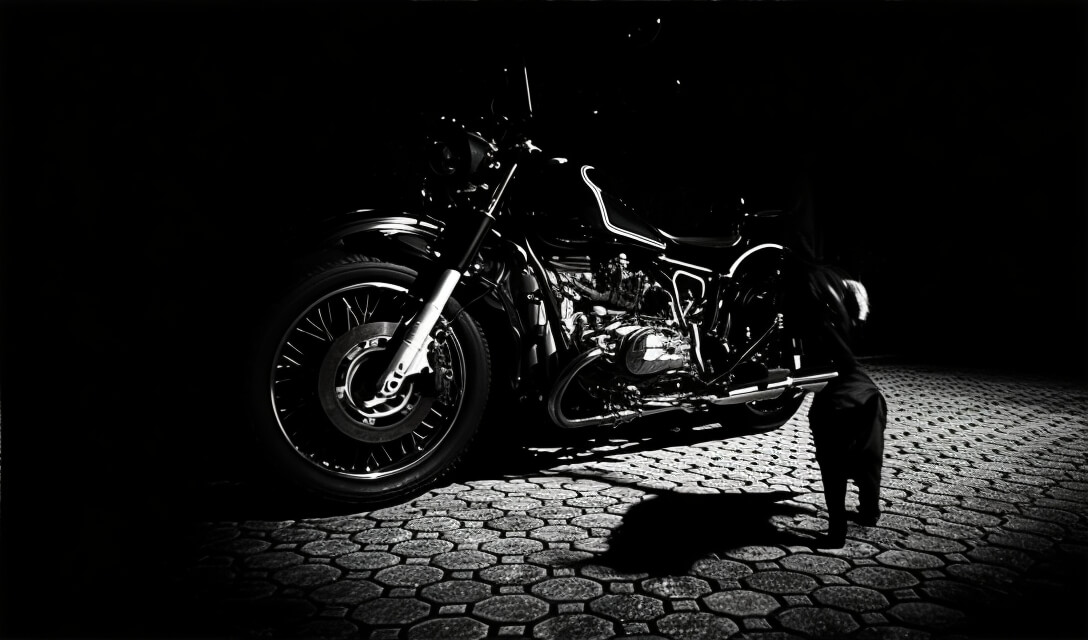
Biker culture is an intricate and fascinating tapestry, a web of shared experiences, camaraderie, and freedom, spinning across highways and winding down country lanes. Yet, there’s more to this culture than the thrill of two wheels and the open road. Biker superstitions have been an integral part of this close-knit community, creating an unspoken language that binds riders together. These superstitions are not merely about fear or blind belief but form the backbone of motorcycle culture, adding layers of depth and meaning to the exhilarating pursuit of motorcycling.
From the wind whispering through the helmets to the hum of engines echoing in their ears, bikers develop a deep connection with their machines and the road. This connection often grows into beliefs and rituals that can seem unusual to outsiders. They become symbols, representing a shared understanding and the unique code of the road that every biker relates to. In essence, these superstitions have become part of what motorcycles symbolize in the biker world.
Why are these superstitions so important to bikers? Why are certain colors considered unlucky, and what does a bell on a motorcycle signify? This article will delve deep into these questions, unraveling the intriguing world of biker superstitions, the rituals, and the mentality behind them. With every rev of the engine, we’ll journey deeper into the heart of the biker community, discovering the fascinating ways in which superstitions shape and influence motorcycle culture.
The Fabric of Biker Culture: Understanding Biker Superstitions
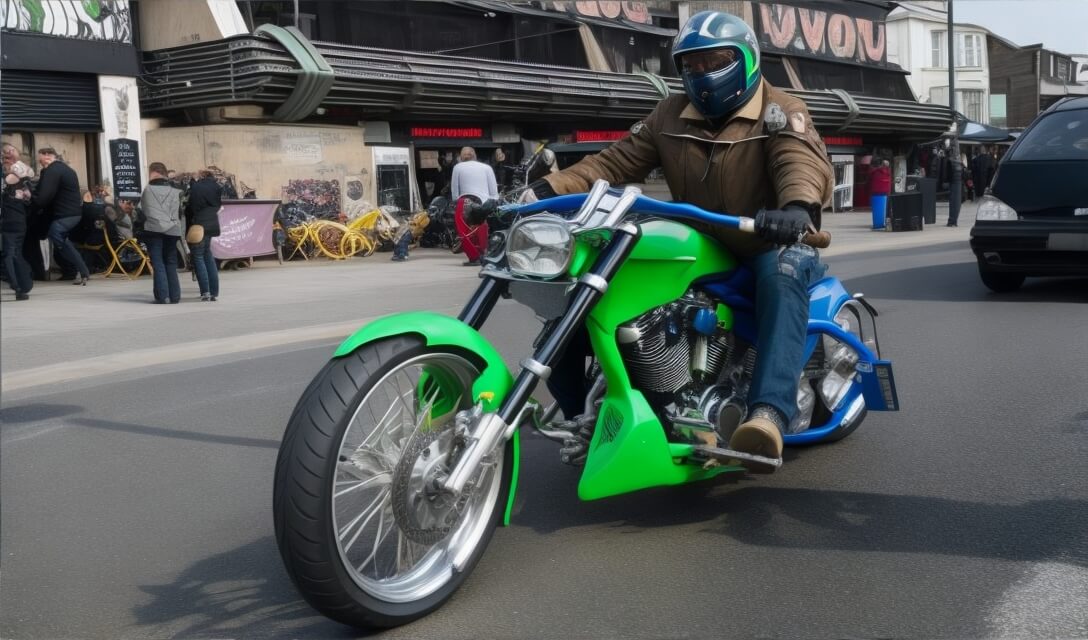
Biker culture is a world steeped in traditions, unspoken rules, and, of course, superstitions. Bikers don’t just ride; they live and breathe motorcycling. Their lifestyle is an amalgamation of many aspects, and one of the most riveting among them is biker superstitions.
In the world of motorcycles, superstitions aren’t dismissed as irrational beliefs; instead, they’re viewed as a quintessential part of the biker community. These superstitions are far more than just legends; they’re a testament to the bikers’ respect for the road and their machines. They echo the voice of camaraderie, companionship, and a shared understanding that weaves itself through every biker gathering and ride.
For a biker, their motorcycle isn’t just a vehicle, but an extension of themselves. It represents their spirit, their passion, and their freedom. Biker superstitions often revolve around their beloved motorcycles, enveloping them in a protective aura of respect and rituals. From the placement of decals to the color of their ride, everything is imbued with meaning, adding to the allure of the motorcycle lifestyle.
Being a part of the biker community is about more than just owning a motorcycle. It’s about embodying the spirit of the ride, respecting the road, and, most importantly, honoring the traditions and superstitions that make up the unique biker subculture. It’s about understanding that riding isn’t just a hobby but a way of life, enriched and enlivened by the intriguing web of biker superstitions.
It’s important to note that while these superstitions are deeply rooted in the motorcycle culture, they aren’t binding. They don’t dictate how one should ride, but rather serve as a framework that connects every rider to the grand, intricate tapestry of the biker community. It’s this delicate balance between individual freedom and shared traditions that makes biker superstitions such an essential part of the motorcycle culture.
Luck on the Road: Common Biker Superstitions and Good Luck Charms
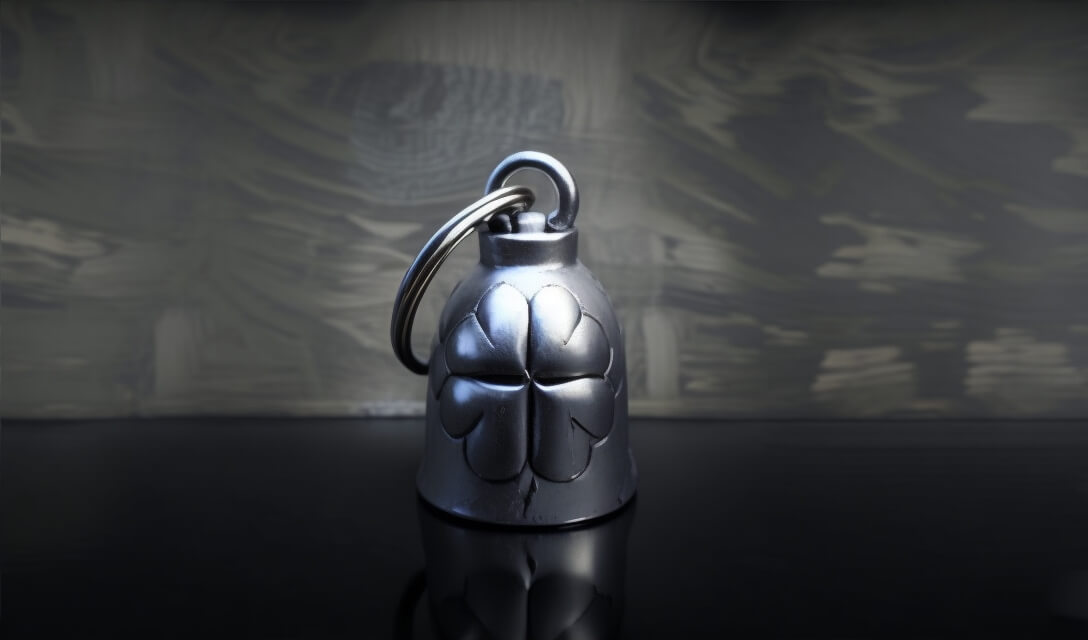
Superstitions, by their nature, are deeply intertwined with notions of luck and protection. This couldn’t be more true in the biker community, where riders regularly court danger and revel in the thrill of the open road. As such, biker superstitions and good luck charms are common elements of the motorcycle lifestyle.
Perhaps the most well-known of these charms is the motorcycle bell, a small metal bell attached to the underside of the bike. The bell is said to ward off evil road spirits or ‘gremlins,’ who are believed to cause all kinds of trouble for a rider, from engine problems to bad luck on the road. The motorcycle bell rules are specific: it must be a gift to work effectively. The act of giving a bell is seen as an act of love and protection, enhancing its potency as a charm.
Another common superstition involves the number 13, often seen as unlucky. In the biker community, however, the “Lucky 13” motorcycle club turns this idea on its head, embracing the number as a symbol of rebellion and camaraderie. This just goes to show how bikers can twist traditional superstitions to fit their own mold.
On a more personal level, many riders have their own rituals before setting out on a ride. Some might tap their motorcycle helmet for good luck, while others won’t ride without their lucky bandana or pair of riding gloves. These personal superstitions, while not universal, are a testament to the deeply personal relationship between a biker and their machine.
All these customs and charms play into a broader narrative that characterizes the biker lifestyle. The stories that have sprouted around them have become an integral part of rider camaraderie, fostering a sense of belonging and brotherhood. They are often shared and discussed among riders, providing a touchpoint for shared experiences and beliefs.
Moving forward, we’ll delve into some specific legends and myths that have captivated the biker community for years, often causing riders to see their motorcycles and the open road in a new light.
Debunking the Myths: The Truth Behind Green Motorcycles and Other Bad Luck Legends
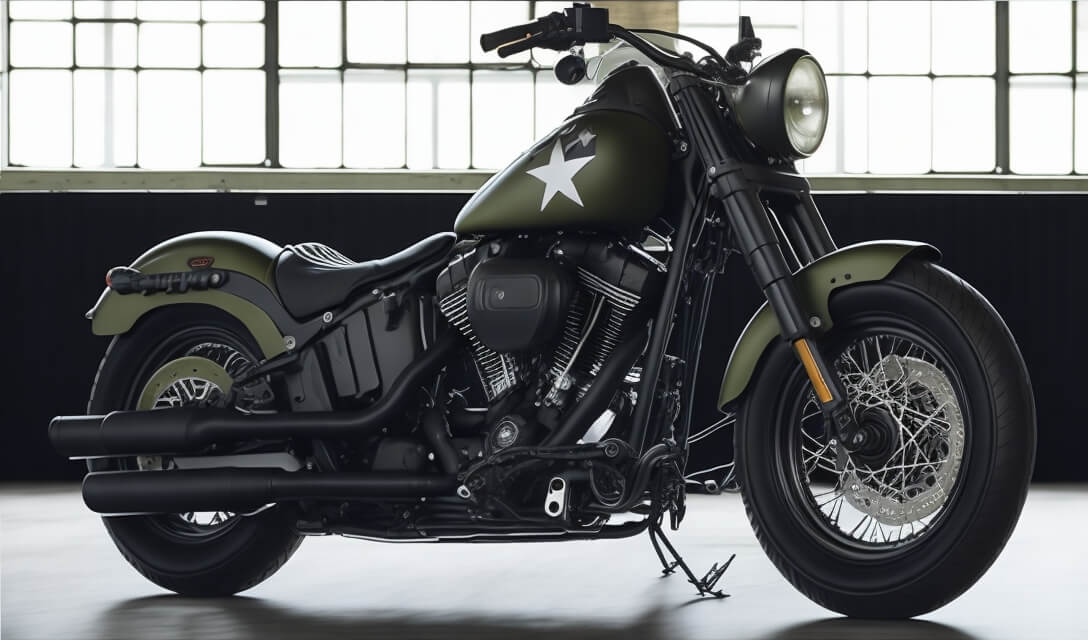
Ever heard of the curse of the green motorcycle? This is one of the most persistent legends in biker culture, a superstition that dates back to World War II. Back then, it was believed that a green motorcycle was an omen of bad luck. Rumors flew that soldiers who rode green motorcycles were more likely to get into accidents or not return from the battlefield. Since then, the legend of the green motorcycle bad luck has been passed down from generation to generation of bikers.
However, is there any truth behind this superstition? The short answer is: not really. While it’s true that green was a common color for military vehicles during WWII, there’s no concrete evidence to suggest that green motorcycles are any more dangerous than motorcycles of any other color. In fact, most accidents on the road are caused by factors such as driver error, road conditions, and mechanical failures – not the color of your bike.
This superstition also spills over into other aspects of motorcycle culture. Many bikers might also be wary of green Harley Davidson motorcycles or associate certain colors with bad luck. For instance, some might believe that red motorcycles are more likely to get pulled over by the police, or that black motorcycles are more likely to get into an accident at night.
One thing that is true, however, is that these superstitions affect the choices that bikers make. For some, choosing a color for their motorcycle isn’t just a question of aesthetics, but a careful consideration of tradition and superstition.
Next, we delve into the fascinating ways superstitions shape the customs and ceremonies that define the biker community.
Rituals and Rites: Superstitions in Biker Traditions and Ceremonies
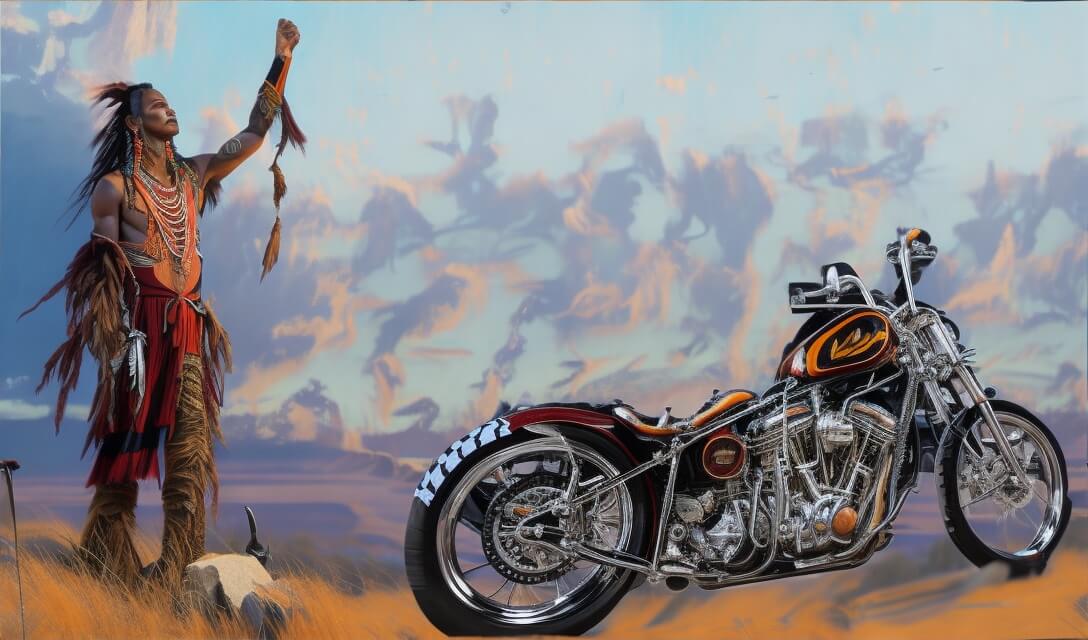
In the realm of biker traditions and ceremonies, superstitions play a pivotal role. They serve as a compass that guides the rituals and rites, from the momentous to the mundane.
Take the funeral traditions of bikers for example. As somber as these occasions are, they’re laden with symbolic gestures deeply intertwined with superstition. From the direction of the final ride to the type of flowers adorning the funeral site, every detail is seeped in tradition. In certain circles, you’ll find bikers placing a small amount of dirt or gravel in the casket – a token representing the countless miles ridden and the unyielding camaraderie of the road. Some bikers even insist on being buried with their beloved motorcycles, a testament to a lifelong dedication to the biker lifestyle.
This goes beyond funerals. Look closely and you’ll spot superstitions woven into the very fabric of everyday riding traditions. For example, many bikers tap their helmets before a ride as a sign of good luck. Others firmly believe in the ritual of the first ride on a new motorcycle. They might choose a specific route for their inaugural ride or carry a particular talisman, all in the hopes of attracting good fortune and warding off misfortune.
It is through these traditions and rituals that the spirit of biker superstitions comes alive. Far from mere folklore or eccentric beliefs, these superstitions are a living, breathing part of the biker subculture. They connect bikers across generations, providing a shared language and common understanding that unites the community.
But what do these superstitions mean for the mindset of the individual rider? Let’s delve deeper into the biker’s psyche.
Rider’s Mentality: The Impact of Superstitions on Biker Behavior
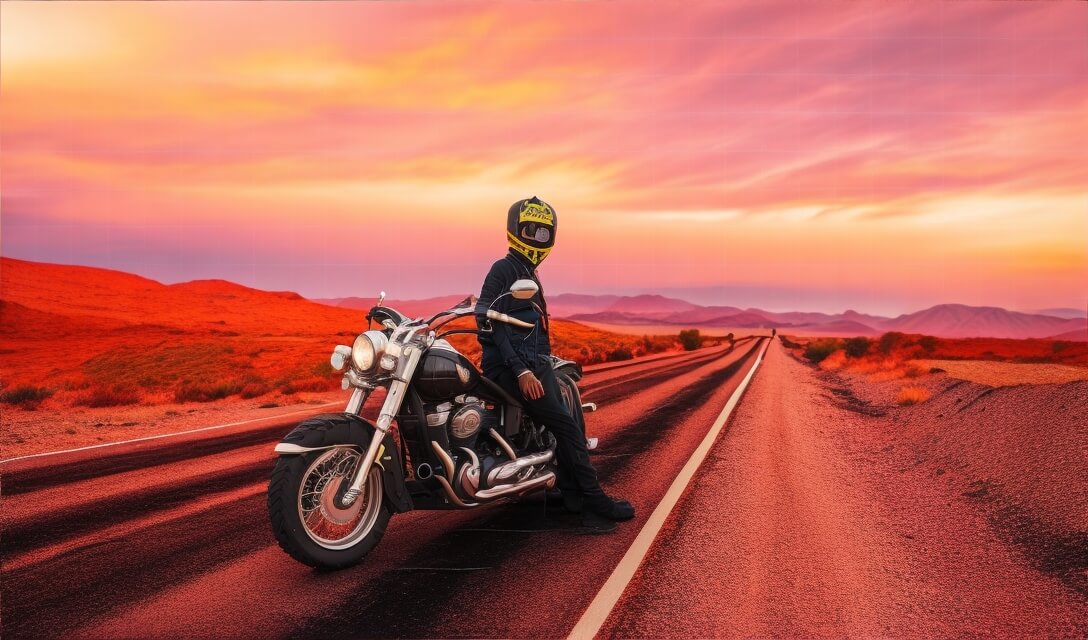
The influence of biker superstitions on the minds and behavior of riders is undeniable. It permeates the biker mentality, dictating a rider’s actions, reactions, and interactions. This impact ranges from the ways in which they approach their rides to the interactions they have with their fellow bikers.
Consider the superstition about the dreaded green motorcycles. A biker who subscribes to this belief would not only avoid purchasing a green bike but also might feel a tinge of apprehension when riding near one. Similarly, superstitions about luck may affect a biker’s actions before, during, and after a ride. Carrying good luck charms, adhering to the rules around the motorcycle bell, or even taking a specific route might all stem from deeply ingrained superstitions.
Moreover, biker mentality tends to value the sense of camaraderie and brotherhood, much of which is often built around shared beliefs and rituals. This common thread of superstitions serves to fortify the bonds within the community. It’s a way of affirming one’s identity as a part of the group and honoring the unwritten rules that govern it.
Interestingly, even skeptics who do not consciously believe in these superstitions may find themselves influenced by them due to their prevalence in the biker subculture. After all, even if you don’t believe in the bad luck of a green motorcycle, would you risk alienating your riding companions who do?
But what about the flip side? How do superstitions navigate the ebb and flow of good and bad fortune? How do they affect a biker’s perception of luck? Let’s delve into this fascinating aspect next.
Navigating Good and Bad Fortune: Superstitions and Biker’s Perception of Luck
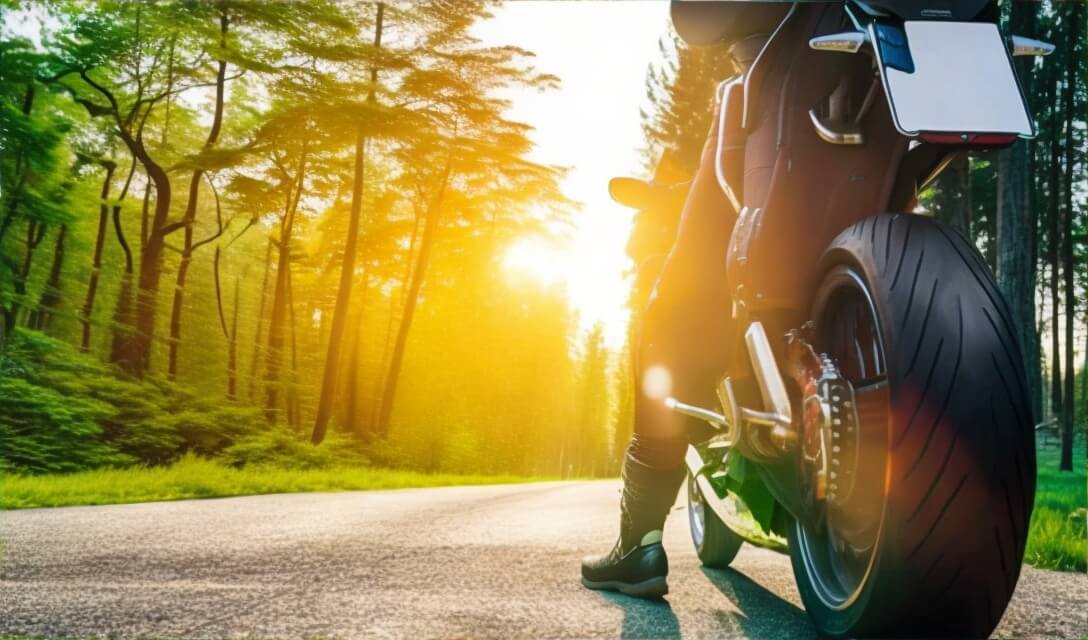
In the realm of biker superstitions, the concept of luck plays a pivotal role. Many bikers regard luck as an unpredictable but influential force that can dictate the course of a ride. For some, it may even represent the difference between a smooth journey and an accident.
One common belief revolves around the lucky color for motorcycles. It’s no secret that color plays a significant part in superstitions across many cultures, and bikers are no exception. While green is notoriously considered unlucky, other colors like red, black, or blue may be deemed more fortunate.
Motorcycle good luck charms also play a role in navigating fortunes. These charms, often gifted by loved ones or friends, are thought to provide protection and good luck to the rider. In some instances, certain objects or even tattoos are considered to bring luck or ward off evil spirits.
Interestingly, bikers often display a fascinating duality when it comes to interpreting fortunes. On one hand, they can be intensely superstitious, adhering to various customs and beliefs to attract good luck and ward off bad. On the other hand, many exhibit a resilient, almost defiant attitude when faced with bad luck.
For instance, encountering a string of bad luck may be seen as a challenge to be overcome, rather than a hopeless situation. This resilient mindset can be traced back to the overall biker mentality – a blend of hardiness, brotherhood, and an unwavering spirit of adventure. The saying, “When life throws you a curve, lean into it,” aptly encapsulates this approach to navigating fortunes.
Yet, despite their tough exterior, bikers are not immune to the fear of the bad run of luck. The fear is not so much about the bad luck itself, but about the potential harm it could bring. This is where the trusty motorcycle bell rules come into play, offering a comforting countermeasure to any lurking misfortune.
The belief in these superstitions, whether fully embraced or somewhat skeptically, forms an integral part of a biker’s perception of luck and influences their behavior accordingly.
Now that we’ve taken a ride through the world of biker superstitions, let’s pull over and reflect on what we’ve learned.
Conclusion
Biker culture, steeped in tradition, camaraderie, and a dash of rebellion, is a world rich with meaning, symbolism, and biker superstitions. From the classic motorcycle bell rules to the intriguing legends surrounding the color of motorcycles, these superstitions infuse a layer of complexity into the biker lifestyle. They provide not only a unique lens to view the world but also form a common thread uniting the biker community across different cultures and continents.
The rites, rituals, and superstitions of bikers are not just about warding off bad luck or ensuring a safe ride. They’re also about belonging, identity, and even defiance in the face of adversity. Whether it’s the stigmatized green motorcycle or the belief in a lucky 13 motorcycle patch, each superstition bears the stamp of the biker spirit – a blend of grit, resilience, and a dash of mystique.
While some may dismiss these beliefs as mere superstition, to many riders, they are a part of a treasured ethos, as integral to the biker identity as leather jackets, bandanas, and the roar of a motorcycle engine. They are stories and traditions passed down through generations, shared over the warm glow of campfires, whispered amidst the clinking of beer bottles, and honored in the silence of memorial rides.
Biker superstitions highlight the rich tapestry of the motorcycle culture, providing a fascinating glimpse into the hearts and minds of those who live to ride and ride to live. From the freedom-seeking souls of lone riders to the unbreakable bonds of motorcycle clubs, these superstitions have seeped into the very fabric of the biker lifestyle, cementing their place in the grand narrative of the biker ethos.
In the end, understanding these superstitions and the beliefs that underpin them is more than an academic exercise. It’s about gaining a deeper appreciation for the biker community and the unique way they view and navigate the world. And who knows, next time you come across a biker with a small bell on their motorcycle or a rider steadfastly avoiding the color green, you’ll have a newfound understanding and respect for these rituals that so richly color the world of motorcycling.
Whether you are a seasoned rider, a novice, or simply an enthusiast, the world of biker superstitions opens a doorway to a deeper understanding of this captivating culture. Embrace the journey, appreciate the nuances, and always remember the biker’s creed – keep the rubber side down, and may your ride be ever blessed with the luck of the road.
In the world of biking, as in life, it is these shared stories, beliefs, and traditions that connect us, reminding us that regardless of the path we choose, we are all part of a grand, interconnected journey. To truly grasp the essence of motorcycle culture, one must understand not only the machines riders cherish but also the superstitions, rituals, and symbols they hold dear.
For this is what it means to be a biker – it’s more than just about riding; it’s a way of life. And these superstitions, as quirky or peculiar as they may seem, are all part of the rich, vibrant tapestry that is the life of a biker.
So, the next time you gear up for a ride, take a moment to listen to the stories of the road, embrace the superstitions, and immerse yourself in the captivating world of the biker culture. After all, every ride has a story, and every rider is a part of this grand narrative. Let’s keep the tradition alive and continue to write our chapters in this extraordinary book of the road. Ride safe, ride free!
Thank you for embarking on this journey with us through the world of biker superstitions. We hope it has provided you with a deeper appreciation of the motorcycle culture and the diverse riders who make up this vibrant community.


